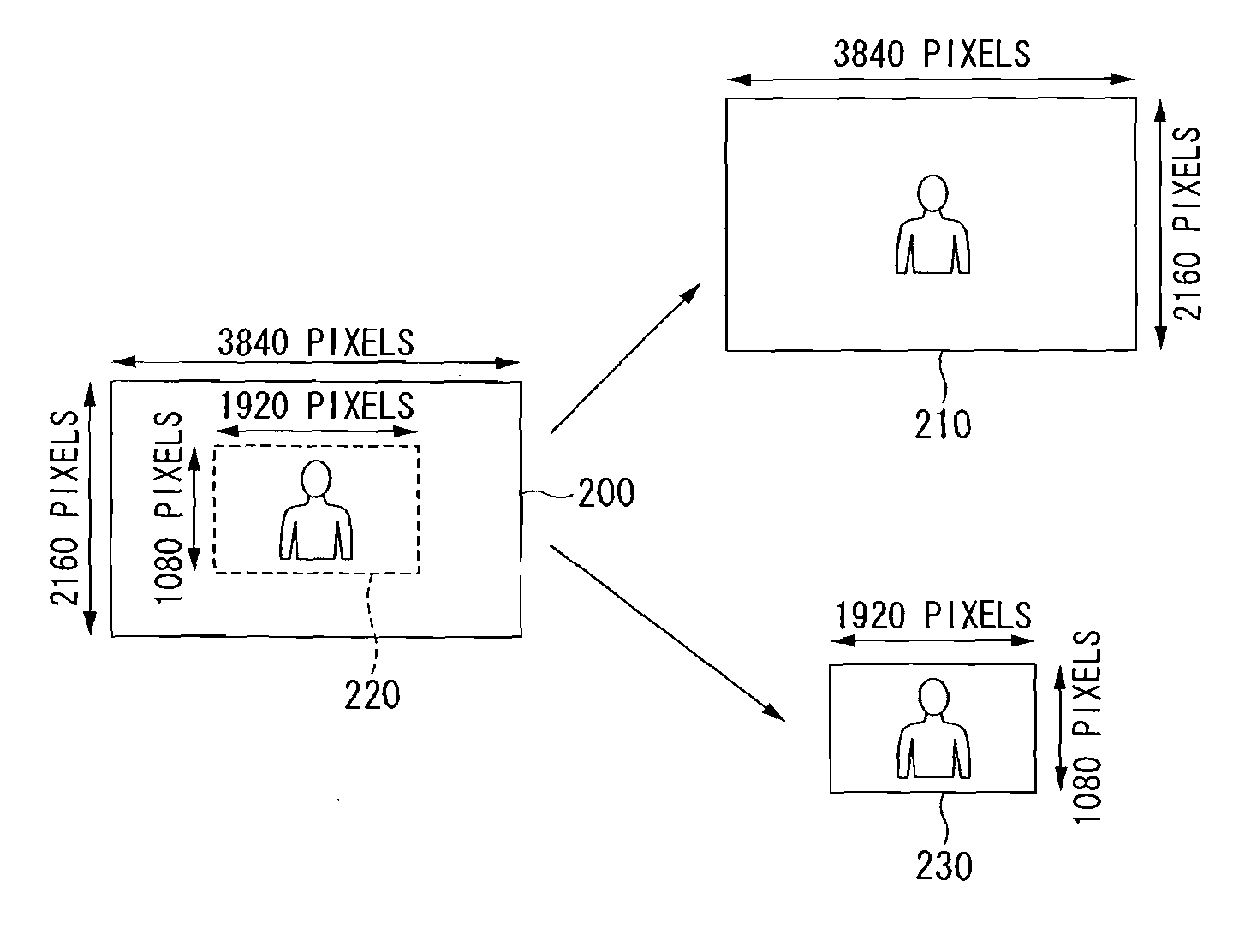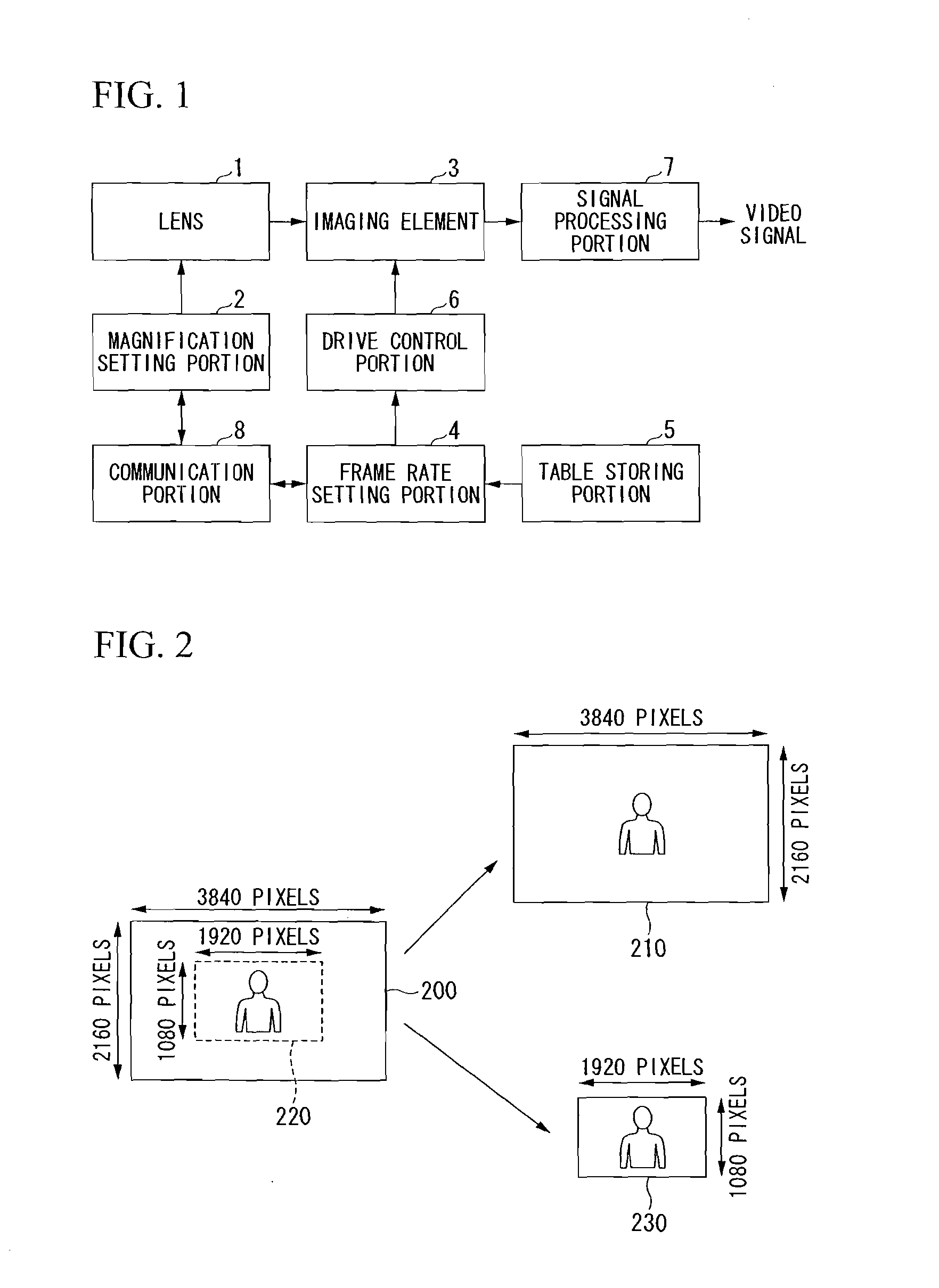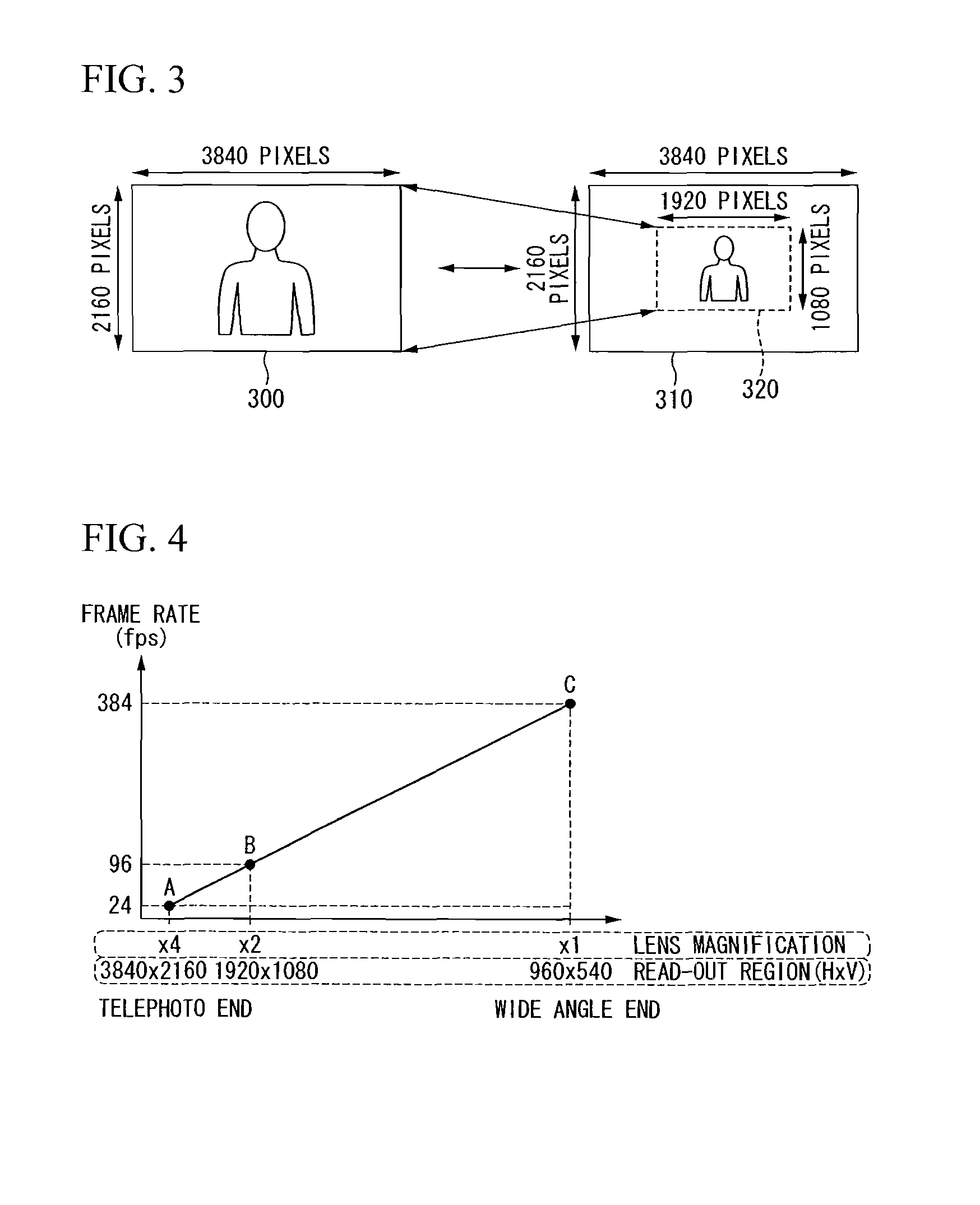Imaging apparatus
a technology of imaging apparatus and spherical lens, which is applied in the field of imaging apparatus, can solve the problems of deteriorating image quality, increasing power consumption and circuit scale, and affecting the quality of images, and achieves the effect of constant angle of view
- Summary
- Abstract
- Description
- Claims
- Application Information
AI Technical Summary
Benefits of technology
Problems solved by technology
Method used
Image
Examples
first embodiment
[0037]First, the first embodiment of the present invention will be described. FIG. 1 shows the constitution of the imaging apparatus in accordance with the present embodiment. In FIG. 1, a lens 1 (image-forming lens) is a lens provided with for example a zoom mechanism that includes a variable power optical system (not shown), and condenses light from a photographic subject (not shown) and forms an image. In addition to a zoom mechanism, one that has a variable power mechanism such as an extender or a converter may be applied to the lens 1. The image that is formed by the lens 1 enters an imaging element 3.
[0038]A magnification setting portion 2 controls imaging magnification by controlling the variable power optical system of the lens 1. The photographer can input the magnification of the lens 1 desired to be set into the magnification setting portion 2. The imaging element 3 (imaging part) is an XY address type solid-state imaging element that is capable of performing block readin...
second embodiment
[0057]Next, the second embodiment of the present invention will be described. Although it is possible to apply the imaging apparatus in accordance with the first embodiment to an apparatus with interchangeable lenses, since there are effects due to individual differences of lenses such as magnification accuracy and image curvature due to aberration, even if the magnification of the lens 1 and the size of the read-out region are independently set so that the photographic angle of view is actually constant with respect to the size of the photographic subject, the size of the read-out region does not necessarily change in a linear manner corresponding to a linear change in the magnification of the lens 1. Therefore, in an imaging apparatus in accordance with the present embodiment, by recording the magnification of the lens 1 that includes the individual difference of the lens 1 and the size of the read-out region that corresponds thereto, even when various lenses are used, it is possi...
PUM
 Login to View More
Login to View More Abstract
Description
Claims
Application Information
 Login to View More
Login to View More - R&D
- Intellectual Property
- Life Sciences
- Materials
- Tech Scout
- Unparalleled Data Quality
- Higher Quality Content
- 60% Fewer Hallucinations
Browse by: Latest US Patents, China's latest patents, Technical Efficacy Thesaurus, Application Domain, Technology Topic, Popular Technical Reports.
© 2025 PatSnap. All rights reserved.Legal|Privacy policy|Modern Slavery Act Transparency Statement|Sitemap|About US| Contact US: help@patsnap.com



